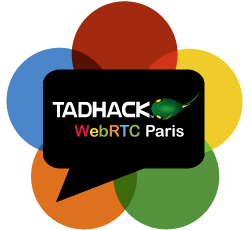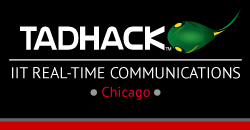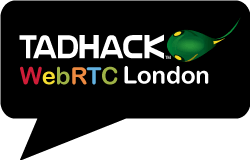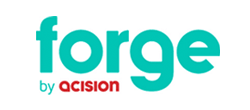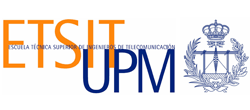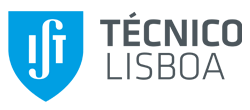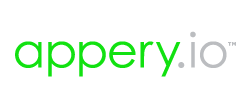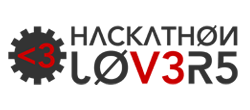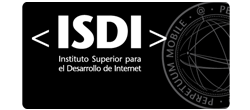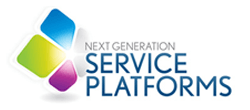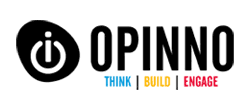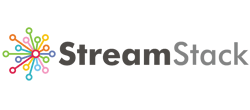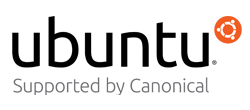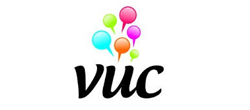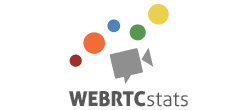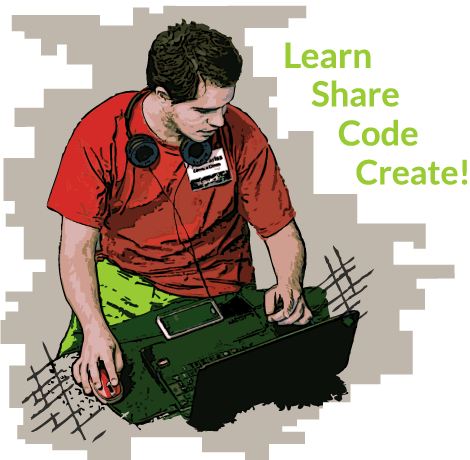

Telecom Application Developer Hackathon
13 – 14 June 2015
Come join the international community of telecom app developers! Discover the latest ways to add communications to your application, service or business. This is the ONLY GLOBAL MEETING place for developers who want to learn, share, code and create using the tools and technologies available in telecommunications. Join one of the above locations or take part remotely, it’s global!
News
- Thank You for TADHack Open
- TADHack Open 2024 ResultsVideos (adding videos at the moment) Pictures Things have finally returned to pre-pandemic levels, we had 15 hacks submitted from around the world at TADHack Open. An amazing result. SignalWire wowed developers with impressive tooling for its AI Agent. [more]
mini-hacks
12 – 13 December Paris
Join our last hackathon of 2015! Our Paris mini hackathon will run 2 days before the WebRTC Conference Expo in December. The winners will be able to pitch to the main conference, a mix of industry leaders, technology vendors, developers, enterprises, web companies and telcos from around the world.
3 – 4 October Chicago
TADHack-mini IIT RTC ran right before the IIT RTC Conference in October with a focus on IoT, NG911, Telecom APIs, WebRTC, federation, and speech / video processing. The winners pitched to the main conference, a mix of industry leaders, academics, telcos and vendors.
11 – 12 April London
This mini hackathon focused on WebRTC with winners pitching to the Global WebRTC Summit. A big thank you to everyone involved for making TADHack mini London such an amazing event! 98 registrations, 70 people attending over 2 days onsite and remotely, 18 world-class hacks generated!
What is TADHack?
All about Communications Technologies
TADHack is here to help you discover the latest ways to add communications to your application, services and business processes.
- Listen to expert speakers from around the world
- See amazing new technologies
- Meet the international community of telecom app developers innovating in communications
Plug in Remotely
With 2 mini hackathons plus a main June event that will run concurrently across multiple locations globally, you will have every opportunity to join in.
Anyone can join, even if you are physically not there. TADHack will be live-streamed, enabling teams to compete remotely.
Join the Competition
Sign up for the Hackathon / Showcase and get a chance to win $35,000 in prize money for the best ideas using the sponsors’ development resources.
Prize pot
What Happened at TADHack 2014?
We had close to 700 global registrations, 60+ hacks generated across Madrid and 5 satellites – Sri Lanka, Philippines, Malaysia, Pune India, Chicago USA, and your own home – and 126 simultaneous viewings of the live streamed event.
Sponsors
Keynotes

Jonathan Christensen
Wire

Serge Lachapelle

Anthony Rodrigo
Dialog

James Tagg
Truphone

Alan Duric
Wire
Developer Resources
For those submitting a remote video pitch for TADHack check out this weblog:
Apidaze
Apidaze Developer How-to Video
WebRTC Server Example: A sample web application that uses APIdaze audio/video conference bridge accessible from the web using WebRTC and the PSTN (using a simple HTTP/REST with cURL).
WebRTC Audio Stats Sample App: A sample web application that shows how to gather RTCP statistics from APIdaze WebRTC audio bridge, very useful to monitor the quality of the underlying network connection.
WebRTC Call Monitor App: Monitor incoming calls placed to a DID from a web application without using SIP nor XMPP. Here, the Google Channel API is used as the signaling channel, and the presented incoming call can be answered directly from the browser using WebRTC.
Bandwidth
Can you imagine….how will:
– Next generation CRM systems get built around communications other than email?
– iOS and Android apps for self-service reimagine the typical customer service call center call with “contextual” mobile VoIP calls?
– Easy of use of SMS and MMS transform concierge and service across travel and hospitality CRM systems?
– Beyond Skype, how will the modern office and collaboration tools look when WebRTC is everywhere?
Getting Started
Go to Bandwidth’s TADHack 2015 Landing Page to view the hackathon FAQs, register for a developer account, and access up-to-date developer resources.
Start with API Documentation and API How-Tos.
Sign Up for an Account
Want to get started? register for an account.
Download the SDKs
Pick your favorite language then find the Bandwidth SDKs and sample code – python, ruby, PHP, Java, .NET and Node.js helper libaries and examples
Starter Projects
Just start your ideas with Starter Projects on GitHub – get started with call tracking, voice reminders, SMS apps.
Going mobile – download Bandwidth iOS and Android starter projects for mobile VoIP apps.
Dialogic
– Conferencing
– Video mixing
– Recording
– Stream insertion/playback
– IVR/DTMF detection & response
– Transcoding
– WebRTC to standard SIP media plane interworking
– Video transizing and transrating
XMS’s standard media control interface support lets it plug into other TADHacks sponsors such as Telestax. PowerMedia XMS also offers a JavaScript API for WebRTC clients and RESTful API for media server control. Take a look at Vince’s winning myVirtualGolfLesson demo for some ideas on what PowerMedia XMS can do.
Getting Started
Go to Dialogic’s TADHack 2015 Landing Page for the most up-to-date developer resources.
Dialogic is offering a number of pre-configured Amazon Web Services (AWS) instances to help get you going in minutes. These instances include an optional Telestax integration. Contact Vince Puglia to get set up with an instance and a personalized quick-start.
Resources
Email Vince Puglia or find him on site to get jumpstarted
PowerMedia XMS product background
Examples on GitHub
hSenid Mobile
Ericsson
Our Location API enables the caller to query the location of a mobile device.
Our Payment API enables the caller to charge/refund an end user.
M2M Data API (with Car Emulator) enables the authorized caller to read the car related data, change the status of the car and get the sensor data history of the car:
– How to read the car data
– How to control the car
– How to access the sensor data history
There is a Car Emulator to visualize all data which is associated with the vehicle.
For more information including slides and postman files for Ericsson APIs, you can go to the following TADHack blog article about Ericsson’s developer resources.
forge by Acision
We offer a unique portfolio of carrier-grade connectivity services, alongside a flexible API and SDK communication framework within a secure environment, which enables businesses and developers to actively build and manage direct dialogue and communication. With forge by Acision, secure voice calling, video chat, IM, group messaging and text messaging capabilities can be easily incorporated into websites and mobile applications and quickly deployed in a cloud-based environment.
In addition to the two $1k prizes from forge by Acision, we will also award a drone and two apple smart watches.
Please follow the links below to get started on forge:
Step 1 – Sign Up
Step 2 – Login and Activate Account
Step 3 – View Documentation and Video Tutorials
Step 4 – Download the SDK and reference apps {You must be logged in to view}
Intel
You can also check out and download the Intel Collaboration Suite for WebRTC, a JavaScript library built on top of the W3C standard WebRTC API which simplifies development of real-time communication solutions.
Ardic will be providing their Web Services and APIs for the Istanbul TADHack event.
Matrix
We will be awarding a big bag of Tessel modules to each of the two best hacks using Matrix. Tessel is a new breed of development board that runs entirely on Node.js and comes with different modules you can plug in – for more information, see the Tessel getting started guide and Tessel sample projects. Both prizes will include several Tessel modules, including:
– multiple core Tessel boards
– multiple servo modules and many servo motors
– multiple ambient modules
– multiple accelerometer modules
– camera module
– GPS module with antenna
– microsd module
– bluetooth module
– audio module
– climate module
– relay module
– RFID module
– DIY module kit
The reference Matrix Web Client already supports WebRTC, so an idea for a hack would be to use or take inspiration from this code in your application. Please feel free to ask questions and chat to the matrix team in the official Matrix HQ chatroom!
Resources:
Spec
APIs
HOWTOs
Matrix at github
WebRTC specific resources:
VoIP spec
WebRTC in the AngularJS webclient:
– WebRTC Service
– Matrix Call
– Room Controller
Oracle
- WebRTC Session Controller: provides highly reliable WebRTC services (audio, video, data) to a wide variety of endpoints on diverse networks
- Converged Application Server that provides protocol mediation between a wide range of protocols and other services
- Communications Services Gatekeeper: an open, standards-based API exposure platform with expansive API management capabilities
Please also check out our blog which features a video and presentations on the Oracle resources.
Telestax
Call tracking technologies are popular because inbound calls are the most lucrative type of lead. They are the sales reps’ most favorite kind of lead, and therefore the marketers most valuable measure to generate and track.
A couple of ideas for apps:
– WordPress plugin shortcode that renders a unique phone number for the web page its used on. Calls to such phone numbers will be tracked and correlated to their corresponding web page in Google Analytics.
– HTML5 / JavaScript Call to Action widget, which renders a phone number and a Click To Call (WebRTC) button. Mobile or Web users can call-in to discuss the product or service offered on the page where the widget is located, without having to navigate generic IVR menus. The widget will be integrated with Restcomm and a Marketing Automation Platform (e.g. HubSpot, Act-On, Spokal) to help measure conversion rates from visitors to closed won deals.
Restcomm resources:
Restcomm github
Technical documentation
Community forums:
Stack Overflow forum
Google RestComm forum
Video resources:
How-to blog and video
Other product demos and how-to videos
Tropo
Tropo Sandbox: Sign up and get access to the free Tropo sandbox to play with the Tropo API.
Tropo Support: There are several methods to get help on Tropo, whether you need best practice suggestions, answers to general how to questions/code problems or help brainstorming a solution to a unique problem you’re trying to solve.

